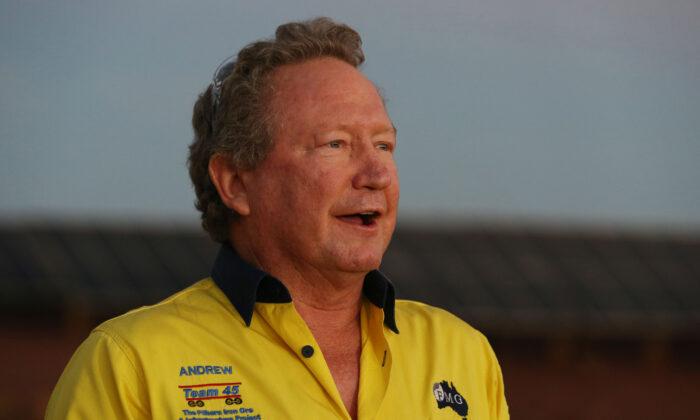Australian iron ore billionaire Andrew Forrest has announced a $9.2 billion (US$6.1 billion) plan to “eliminate” his mining empire’s “fossil fuel risk profile.”
Forrest announced his company’s “decarbonisation strategy” during a CEO roundtable on “Business leadership to rescue the Sustainable Development Goals” in New York City.
The event was part of U.S. President Joe Biden’s First Movers Coalition, which was also attended by the secretary-general of the United Nations.
Decarbonisation is understood as reducing or stopping the emission of carbon gases, especially carbon dioxide (CO2).
The world’s fourth-largest iron ore producer vowed to “eliminate” exposure to fossil fuels, remove exposure to price risks associated with relying on carbon offsets, and invest in renewable energy generation and battery storage.
The mining empire also said it would create a “new green growth opportunity” by producing a “carbon-free iron ore product” and commercialising “decarbonisation technologies.”
Forrest noted the investment would generate “attractive economic returns,” including net operating cost savings of US$818 million a year from 2030, at prevailing market prices for diesel, gas and Australian carbon credits.
The billionaire said in the press release, “there’s no doubt that the energy landscape has changed dramatically over the past two years, and this change has accelerated since Russia invaded Ukraine.”
Fortescue is “moving at speed to transition into a global green metals, minerals, energy and technology company,” he noted.
Contradictory Data
As energy companies— including Fortescue, BHP and Rio Tinto—embark on the race to phase out fossil fuel, some have raised concerns about the unintended consequences of decarbonising the built environment.As such, Australia only has a couple of green hydrogen pilot plants that produce a mere drop in the ocean of usable hydrogen.
“Green hydrogen requires green electricity sources, which in most plans involves enormous solar farms full of non-recyclable solar panels which take years to offset the energy used to make them in the first place. Blue hydrogen, in the immediate term, would probably be more green than green hydrogen, so to speak,” he wrote on Sep. 5.
He also questioned whether the shift to renewables would require a large-scale rebuild of the whole system, which would affect the electricity price, cost of living, Australia’s productivity and competitiveness.
“Replacing generation capacity with storage capacity is good in theory, but the required storage volumes are staggering, and the choice of technology that may achieve it is unclear.”
“The most obvious risk is that we decommission all our existing technology that is proven and replace it with the new technology needed to maintain dispatchable capacity only to find it fails.”





Friends Read Free